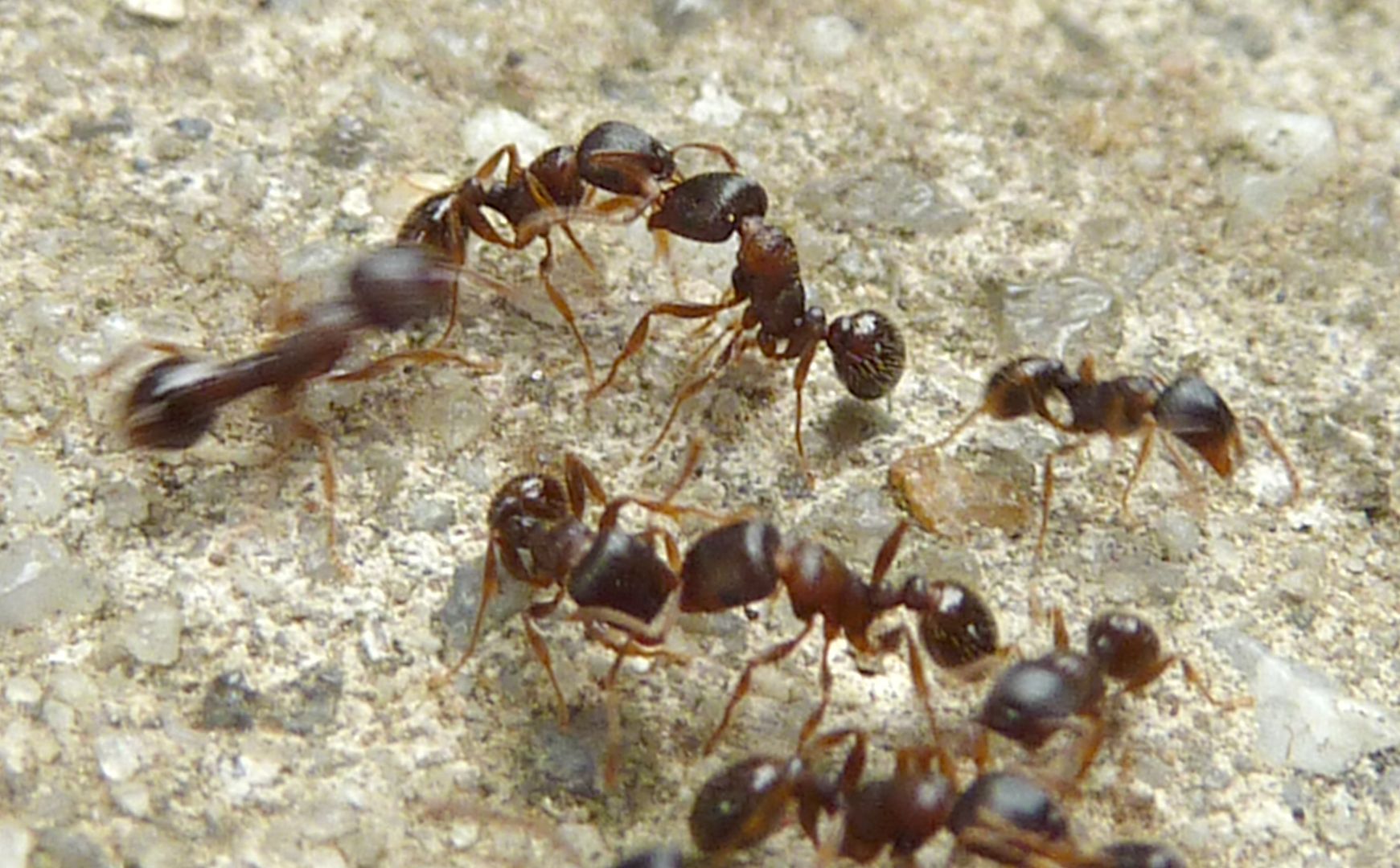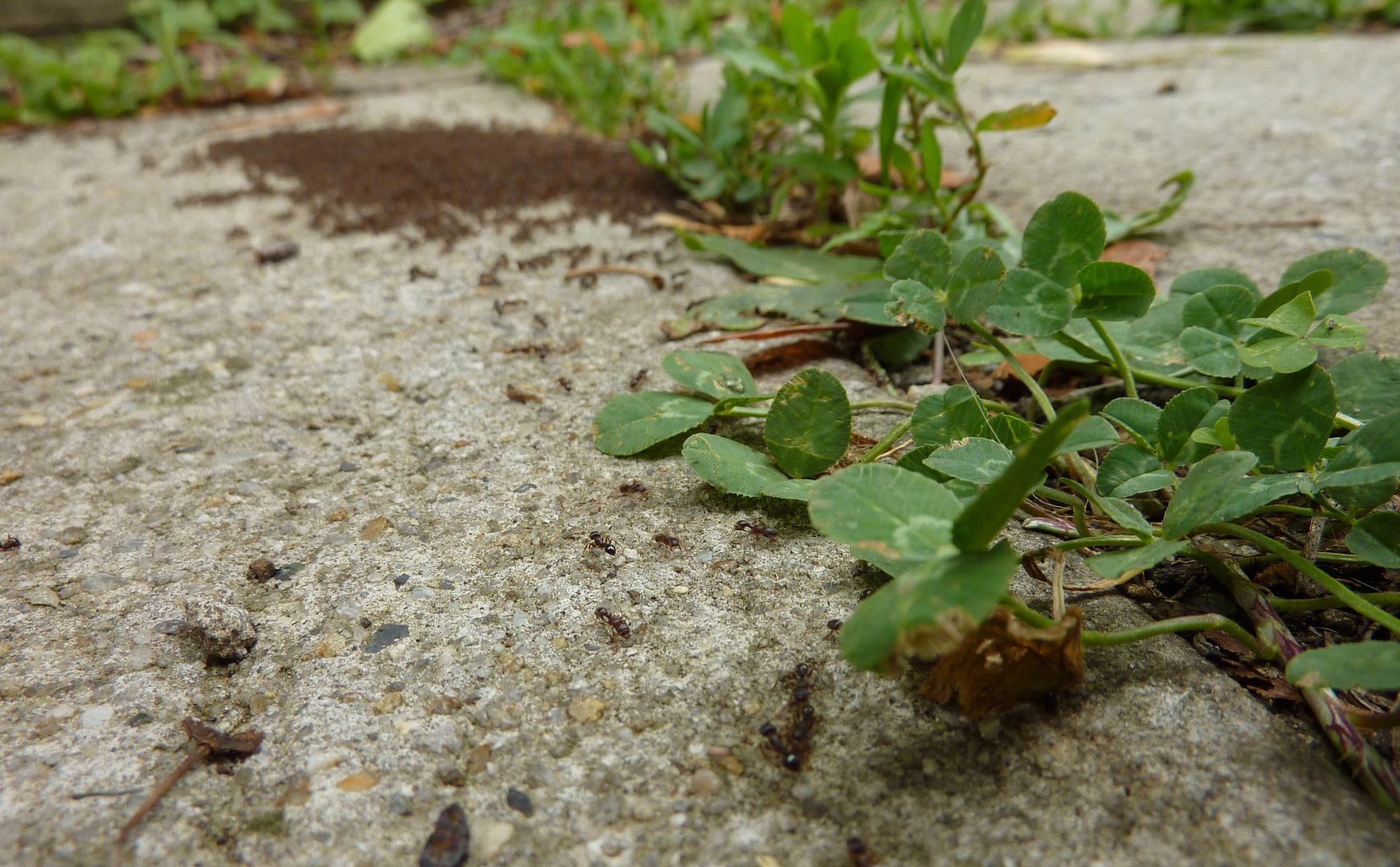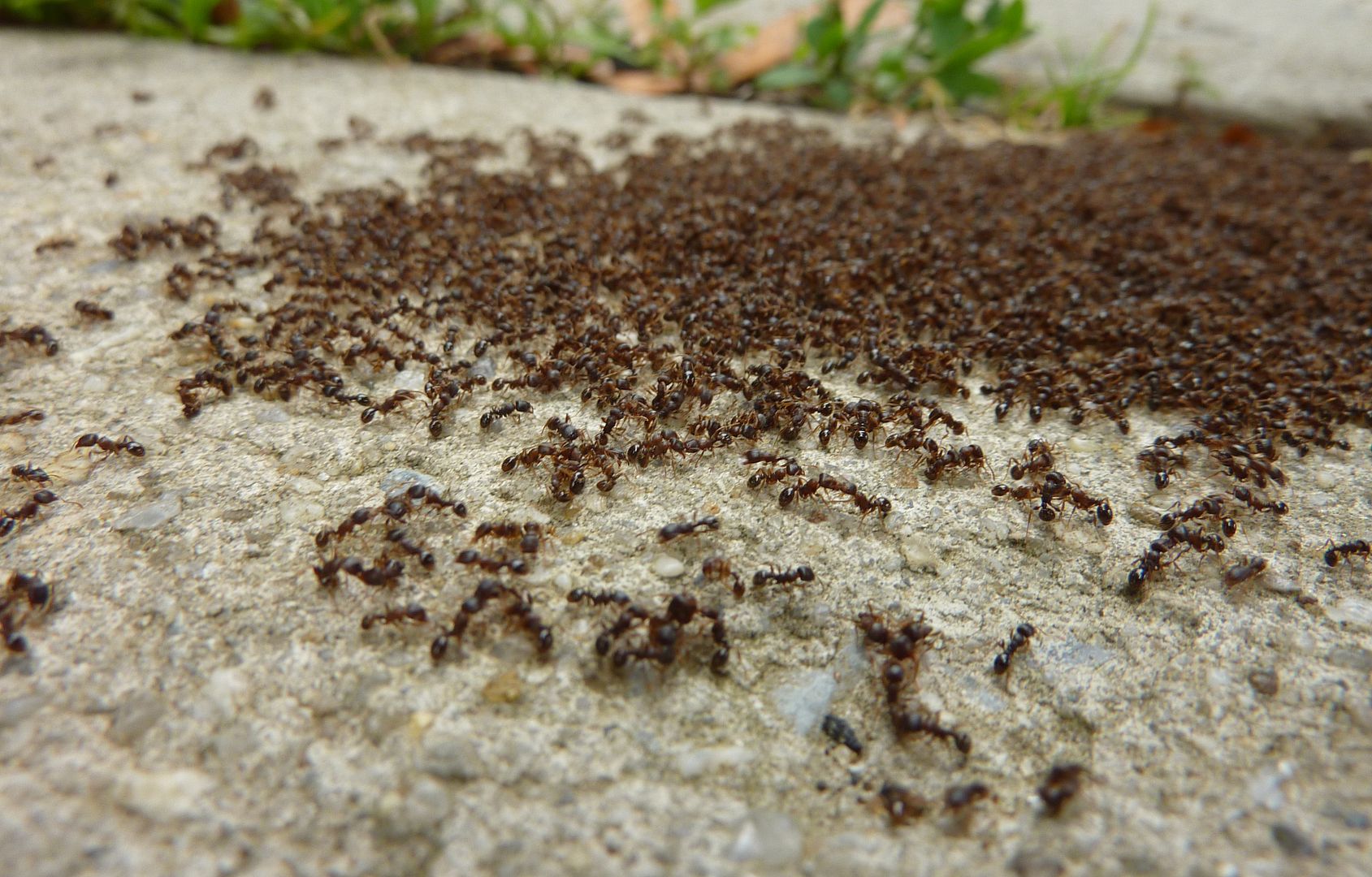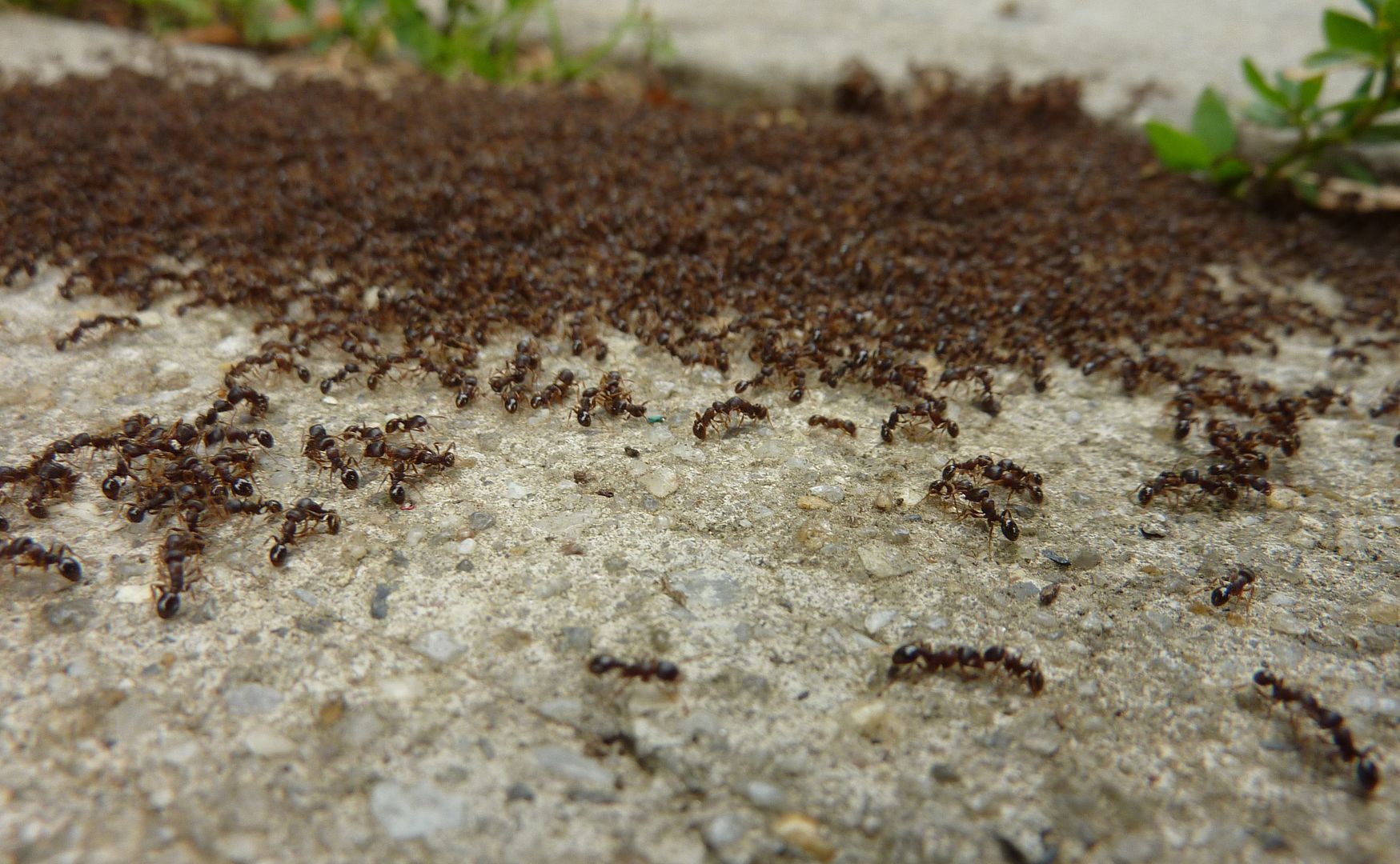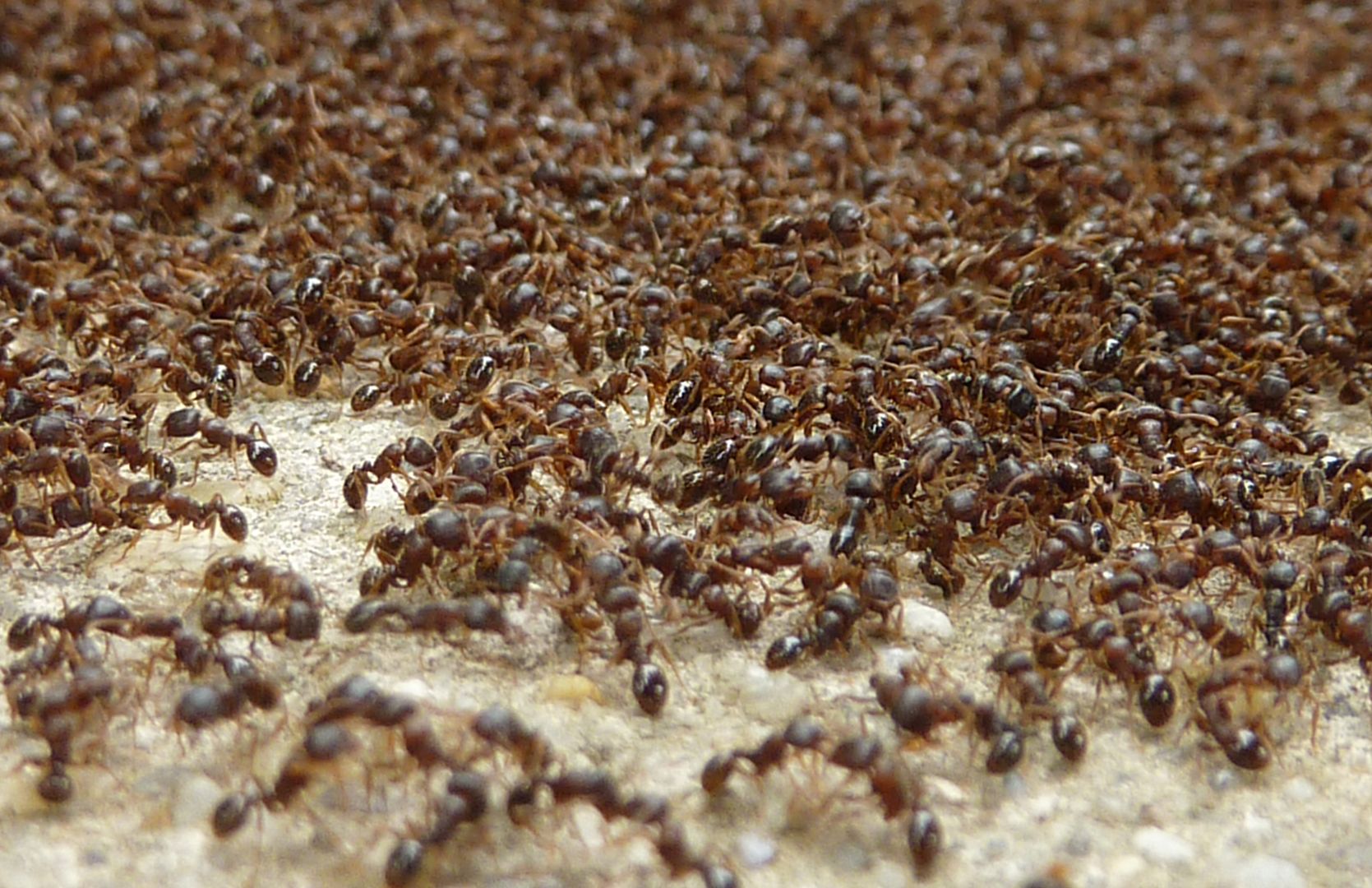Despite one common name, there are two species of Pavement Ants to look out for in North America (11 in total but most are restricted to the south west). Tetramorium tsushimae and Tetramorium species E. are the main ones found in the US, though which one you have makes little difference. Both are virtually identical. Don't let the links to antweb in this paragraph fool you; you're looking at a fraction of the total diversity within a colony. I'm not even sure I linked to the correct T. species E. In North America for the past ~180 years both species were simply assumed to be Tetramorium. caespitum. That species is only found in Europe, so what we have in North America has been found, mostly through DNA I think, to be the two species linked above. Now species E. doesn't match up properly with anything but it's generally known that it's not native. So the species name seems to be in limbo until someone figures out what is going on.
In short, though, they're pavement ants. T. species E. is typically .5mm longer than T. tsushimae and more often than not, T. species E. is uniformly black or dark brown. T. tsushimae tends to be smaller, and has a lighter mesosoma (middle body segment). Both traits of which vary within a colony. As I said though it makes little difference.
A fun aspect these species have is how territorial they are even among the same species. Assuming they're present in your neighborhood, it should be easy to find one of their wars happening with a reasonable walk to your local park or playground of choice.
As mentioned, these ants love rocks and logs for incubation and they nest in places (typically lawns) that have very low resources. They're not the worst invasive because they more or less displace native species as opposed to taking this kind of aggression and putting towards their enemy. Really I think they ignore all other ant species except their own or other Tetramorium. That said, they will still harass other species right out of their territory as they fight to take over structures for incubating their brood.
With competition so high for land these kinds of battles are epic, despite looking like a dark patch you could fit a dinner plate over.
These aren't two different species fighting, but rather two different colonies. The only way to tell which side is winning and by seeing which colony the mob is closer to. Should one side push the other all the way home, all bets are off! The winner will steal all the brood either to eat or rear as their own, kill the resident queen if they can, and what workers remain won't be in the best of shape to be of any threat in the future.
Early on in the year colonies make a series of foraging tunnels that branch out from the main area they over wintered. I suspect these can be used later on as an escape rout should another colony push on their front door. And at the same time these tunnels allow the colony to reach out into the surrounding land and control an area. (About 15' from the nest?)
Numbers are the key to victory here. Casualties are surprisingly infrequent. This has been described as more ritual than a slaughter fest though a number of them will certainly die. While this may be true, I suspect it's more because the individuals are doppelgangers of one another. No individual has any chemical or phisical advantage over the other. The result is typically thousands of ants grappled with one another in a struggle of life and death.... until one lets go.
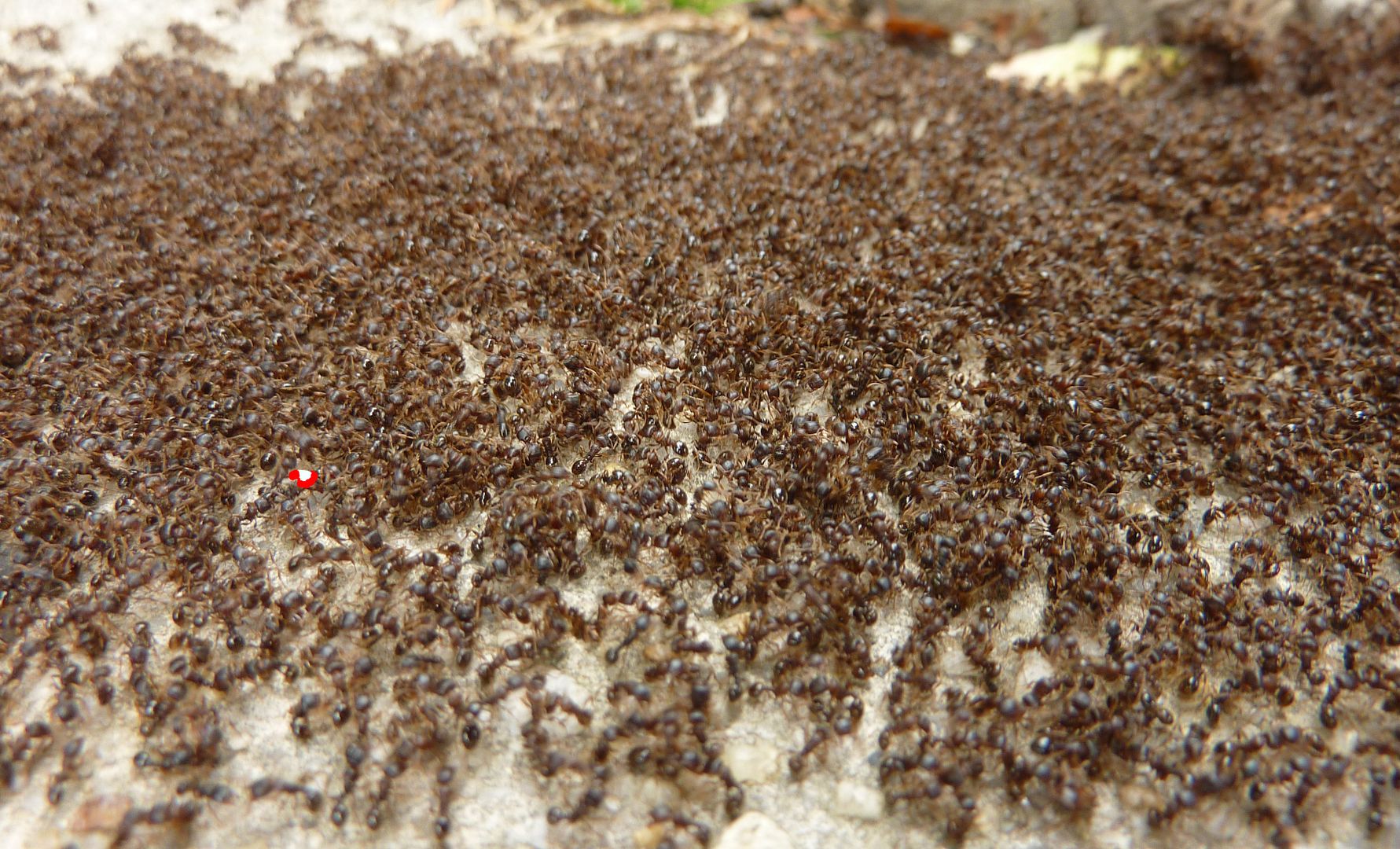 |
| Click to Enlarge |
